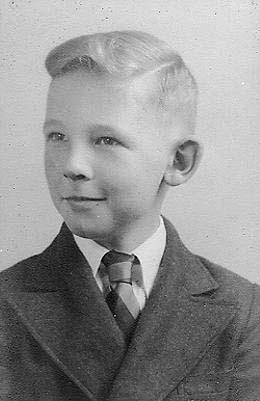In this People's History, former Seattle resident John M. Leggett offers his memories of Loyal Heights Playfield in Ballard in the 1930s and 1940s.
Loyal Heights Playfield
The present Loyal Heights Playfield had been in use as a play area by neighborhood children for more than a decade before the City of Seattle in 1941 condemned and purchased the two full city blocks on which it was created.
I was one of those neighborhood children and remember well that we went from door to door in the area with Hills Bros. coffee cans (what else in Ballard?) soliciting donations to help fund the purchase.
We moved from the area during World War II after only the initial grading had been done, but even that made it possible to play baseball there for the first time.
During the 1930s the four city blocks between W 75th and W 80th streets, 20th Avenue NW and 22nd NW were "empty lots," as we called them, except for two houses, one on each side of 21st just north of W 75th. In those days 21st continued north of 75th as an unpaved street, as were most streets in that area.
There was also an old covered wagon hidden by brush in a depression on the south side of W 80th between 21st and 22nd. Because a heavily-bearded old man lived in it, we kids were afraid to go near. In fact, some of us felt he might be the "boogy man" we were so often told would get us if we didn’t behave. We were sure he wasn’t Santa Claus.
In order to create the playfield, 21st was closed and the houses on it just north of W 75 were moved away. The gentle northward slope of the land made it necessary to move a lot of dirt to create a level area. One result of this was the high embankment along W 75th at the south end of the playfield.
There were a number of children -- 15 or 20 -- living on 21st just south of the area that became the playfield. We usually played softball in the street and hide 'n' go seek in everyone’s yards as well. But we flew our kites up in the "empty lots" because there were no trees or utility poles with wires. Sometimes a boy would make a box kite and buy a lot of heavy twine so it could be flown two blocks or more away.
In the middle of the block on the west side of 21st between 75th and 77th, there was a large area of clay that contained a number of shallow "ponds" a few inches deep. It was fun to play there and then hope our clothes would get dry before we went home. We were, of course, too far away for our parents to be heard if they called us for supper. But one enterprising family used a whistle and saved their voices.
A favorite activity was building forts. Sometimes this involved collecting a lot of branches and building a hut. But on other occasions we would spend several days digging a big hole in the ground and then covering it with branches so we had a hiding place with a "secret" entrance. Some of these were large enough for five or six of us boys.
What we called "huckleberry bushes" were growing on the hill where the Community Center now stands and we liked to eat the berries. But sometimes this triggered a "war" with the kids who lived along the east side of 20th between 75th and 77th, where there was a row of houses overlooking the area. We never had a face-to-face conflict though -- probably because we were afraid of them as they were a bit older.
I believe everyone was pleased when the City decided to create a genuine playfield for the neighborhood. But I suspect later generations of kids never had as much fun playing there as we did when the area was still undeveloped.

